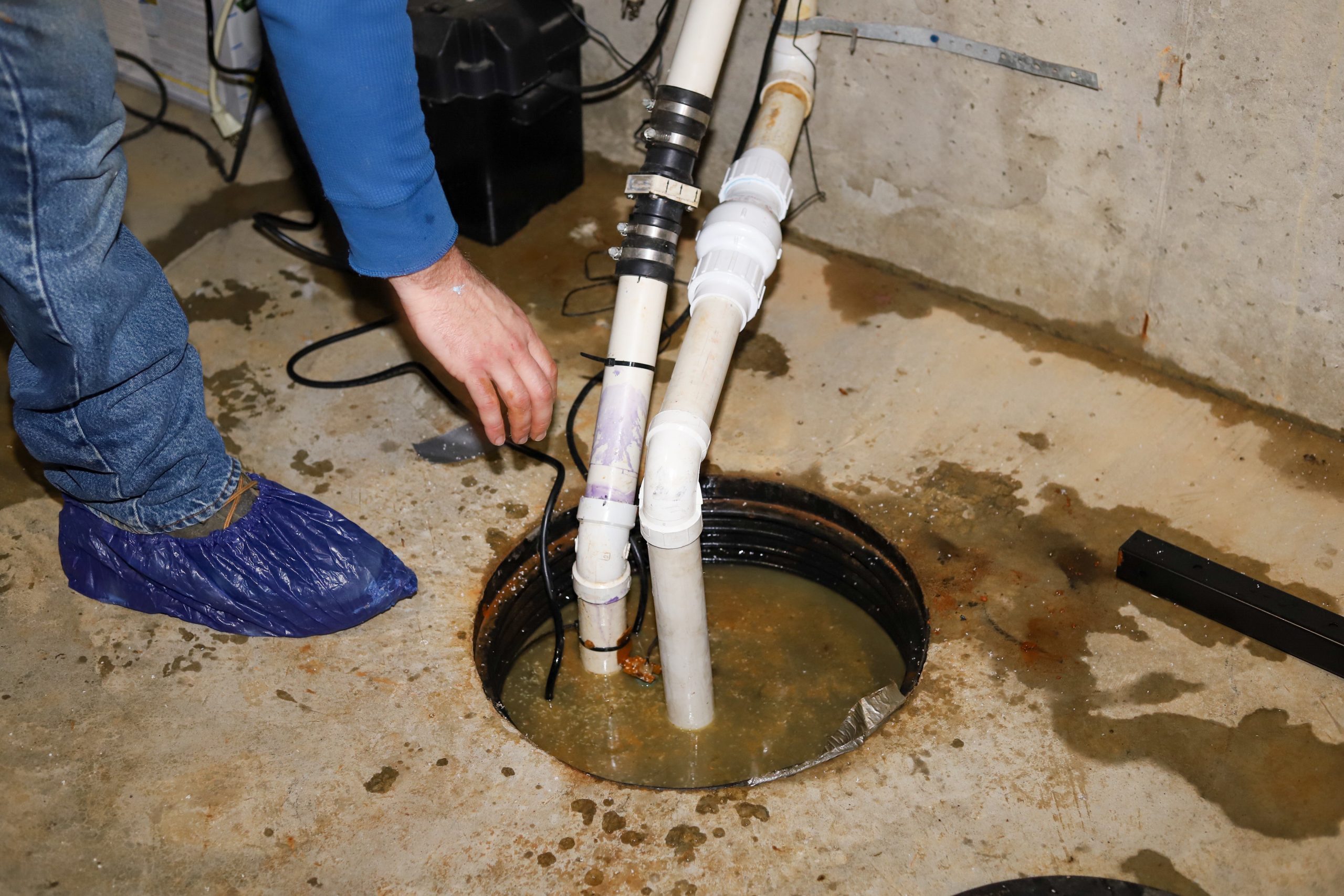Speedy Solutions for Maintaining a Sump Pump
Speedy Solutions for Maintaining a Sump Pump
Blog Article
Every person seems to have his or her own thinking with regards to How To Effectively Clean A Sump Pump.

Sump pumps are vital components in lots of homes, specifically in areas susceptible to flooding or extreme wetness. They assist avoid water damages by effectively getting rid of excess water from cellars or crawl spaces. However, like any other home appliance, sump pumps require regular upkeep to guarantee they function successfully when needed one of the most. Cleansing your sump pump is an important part of its maintenance, and understanding exactly how to do it appropriately can save you from expensive fixings and potential calamities.
Introduction
Preserving a clean sump pump is important for its proper functioning and longevity. Neglecting this important job can bring about blockages, breakdowns, and ultimately, water damages to your building. As a result, learning how to clean a sump pump is essential for house owners who rely upon these tools to keep their cellars dry and secured.
Indicators of a Dirty Sump Pump
Knowing when your sump pump requires cleaning is essential for protecting against potential malfunctions. Some usual indicators that indicate a dirty sump pump include unusual noises throughout procedure, minimized water circulation, and visible particles in the pit. If you see any of these symptoms, it's essential to clean your sump pump without delay to prevent any additional concerns.
Planning for Cleansing
Prior to you start cleaning your sump pump, it's important to take some security precautions. Start by shutting off the power to the pump to prevent any type of electrical mishaps. Furthermore, wear ideal protective equipment, such as handwear covers and safety glasses, to safeguard yourself from dust, debris, and potential virus.
Understanding the Sump Pump
Before diving right into the cleaning procedure, it's vital to have a standard understanding of exactly how a sump pump functions. Generally installed in a pit or container listed below the cellar flooring, a sump pump includes several key elements, including a pump, a float button, and a discharge pipeline. When water gathers in the pit, the float switch turns on the pump, which after that pumps the water out via the discharge pipeline, far from the building's structure.
Step-by-step Guide to Cleansing a Sump Pump
Shutting down the Power
Begin by separating the power supply to the sump pump to avoid any crashes while cleansing.
Looking For Appropriate Functioning
Prior to re-installing the pump, carry out a quick examination to ensure that the float switch triggers the pump correctly. Pour some water right into the sump pit and observe the pump's procedure. If every little thing is working properly, you can reconstruct the pump and reconnect the power supply.
Eliminating Debris and Dirt
Utilize a bucket or a scoop to eliminate any kind of noticeable debris, dust, or sediment from the sump pit. Dispose of the particles appropriately to stop it from obstructing the pump or the discharge pipe.
Cleaning up the Pump and Float Switch Over
Once the pit is clear of particles, carefully eliminate the pump from the pit. Check the pump and the float switch for any type of signs of damage or wear. Utilize a soft brush or fabric to cleanse the surfaces and get rid of any type of built up crud.
Flushing the System
After cleaning the pump and float switch, purge the sump pit with clean water to eliminate any remaining dirt or sediment. This will help make sure that the pump runs efficiently and effectively.
Upkeep Tips to Maintain Your Sump Pump Clean
Along with periodic cleaning, there are numerous maintenance suggestions you can comply with to keep your sump pump in ideal condition:
Verdict
Cleansing your sump pump is a critical facet of its maintenance and ensures that it runs efficiently when you require it the most. By adhering to the actions detailed in this guide and integrating normal upkeep into your regimen, you can prolong the lifespan of your sump pump and protect your home from water damage.
6 STEPS ON HOW TO CLEAN A SUMP PUMP PROPERLY
UNDERSTANDING SUMP PUMPS
Your sump pump plays a crucial role in protecting your home by managing and removing excess water. It primarily functions as a “shield”, guarding your basement against the damaging effects of water accumulation. The pump is housed in a sump pit in the lowest part of your basement, and its job is to pump out any water that collects there.
During heavy rainfalls or when snow melts rapidly, water can infiltrate your basement, posing potential risks like flooding, structural damage, and harmful mold growth. Here, the sump pump springs into action, pumping out the intruding water and directing it away from your home.
SAFETY FIRST
Before cleaning, remember to prioritize safety. Disconnect the sump pump from the power source to prevent any accidental electric shocks. Also, wear sturdy gloves to protect your hands from any sharp or dirty components within the pump.
REMOVE THE SUMP PUMP
After ensuring your safety, the next step is to remove the sump pump from its pit. Doing this might require careful maneuvering as you don’t want to damage any pump components. Once removed, clean the sump pit to remove any accumulated debris or sludge.
INSPECT THE PUMP
Inspect the pump for any visible signs of wear or damage. Check the power cord, float switch, and impeller housing. If any components look worn out or damaged, consider replacing them to ensure optimal performance.
CLEAN THE PUMP
Thoroughly clean the pump with warm, soapy water. Make sure to rid it of any dirt, gravel, or other debris that might impede its performance. You can use a toothbrush to clean the small, hard-to-reach parts of the pump.
REINSTALL THE SUMP PUMP
Reinstall the pump into the sump pit Make sure it’s positioned correctly to remove the water effectively Once it’s back in place, reconnect it to the power source TEST THE PUMP
Finally, pour some water into the pit to ensure the pump works correctly. It should start automatically and begin pumping out the water; if it doesn’t, check the power source and the positioning of the pump.
Remember, while cleaning your sump pump is an essential part of home maintenance, hiring a professional plumber for a thorough inspection and cleaning at least once a year is also important. This will ensure that your pump is in optimal condition, ready to protect your home from potential water damage.
BEST PRACTICES FOR CLEANING SUMP PUMP DISCHARGE PIPES
Regular Inspection: Regularly inspect your discharge pipes, especially during heavy rainfall or snowmelt periods. Look for any signs of blockage or damage. Early detection of problems can prevent serious issues down the line. Periodic Cleaning: Over time, sediment and debris can accumulate in the discharge pipes, impeding the flow of water. Regular cleaning helps keep the pipes clear and functioning efficiently. You can use a high-pressure water jet to effectively clean the pipes. Insulation During Winter: In colder climates, discharge pipes can freeze, blocking the outflow of water. Protect your discharge pipes from freezing temperatures by insulating them with foam pipe insulation. This will ensure the sump pump can continue to discharge water even in freezing conditions. Proper Positioning: The discharge pipe should be positioned to direct water away from your home’s foundation. Improper positioning can lead to water seeping back into the basement. Ensure the pipe is long enough and angled correctly. Installation of a Check Valve: A check valve prevents water from flowing back into your sump pit after the pump has pushed it out. Installing a check valve helps maintain the efficiency of your sump pump and reduces the risk of flooding. Minimize Pipe Turns: Every curve or turn in the discharge pipe can decrease the efficiency of water flow. By minimizing turns and bends in your discharge pipe, you can increase the efficiency of your sump pump. https://www.fullspeedplumbing.com/how-to-clean-a-sump-pump-properly9999/

Do you like reading up on How to Care for Your Sump Pump? Make feedback down the page. We will be pleased to see your views about this blog posting. We are looking forward that you visit us again soon. Don't hesitate to take the opportunity to share this article if you liked it. Thank you so much for taking the time to read it.
Visit My Website Report this page